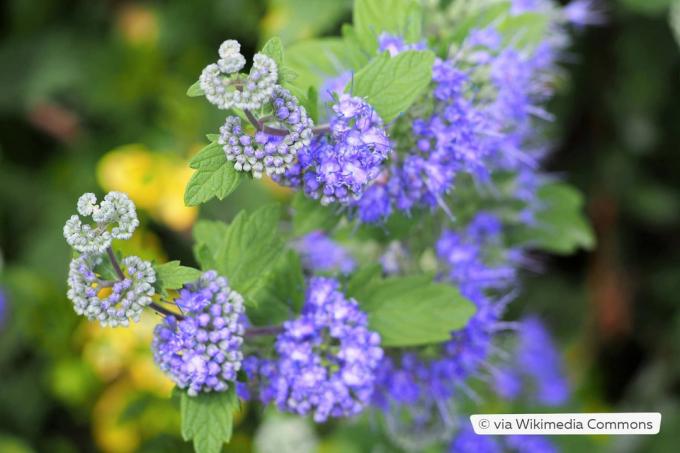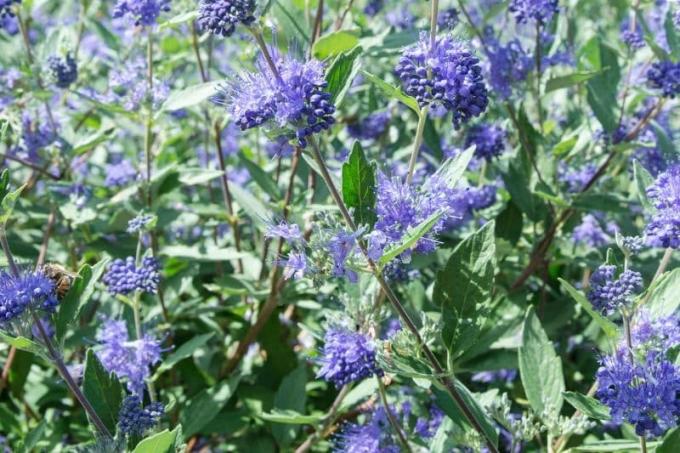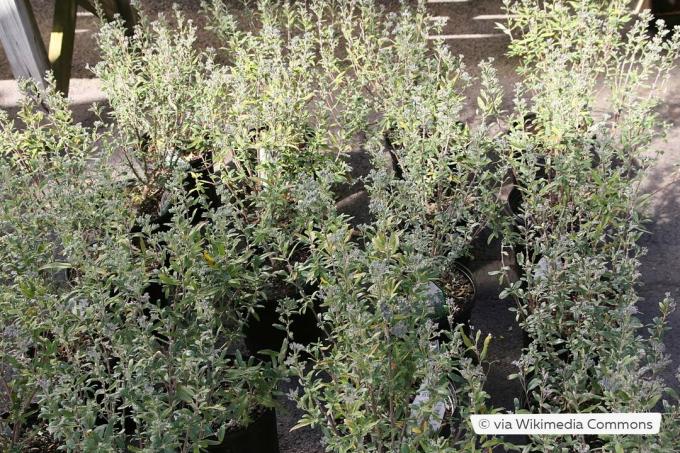
The bearded beard (Caryopteris x clandonensis) impresses with its magnificent, bright blue flowers and develops into a pretty ornamental shrub in the right location. But what should the optimal location look like?
In a nutshell
- Location in the bed or tub
- Absolutely avoid wetness
- Hibernation only with protection
- Potted plants particularly endangered
Table of contents
- light and temperature
- soil condition
- location in winter
- frequently asked Questions
light and temperature
Beard flowers prefer wind-protected, warm and sunny locations, the sunnier the place, the lusher the bloom. You can in one sunny bed as well as in the protection of neighboring shrubs, in front of a south-facing wall or as a background plant in one rock garden.

The space in front of a wall has the advantage that it is protected from drafts and the wall radiates valuable heat at night. Companion plants with similar heat requirements can also benefit from this
lavender, sage, the sacred herb or drought-tolerant grasses. In the right location, the beard flower requires little care. Shady areas are unsuitable, here they would lose their flowering splendor.Who in the garden often have a problem with snails should plant whiskers in close proximity to at-risk areas. The hairy leaves and the scent that these plants give off keep the pests away.
soil condition
In the bed
As far as the condition of the soil is concerned, the bearded beard is not quite as picky, provided it is dry rather than too wet.
What properties should it have:
- should be loose, well drained and humic
- alkaline to slightly acidic, PH value from 6.5 to 7
- Improving the permeability of heavy loamy soils
- by mixing in plenty of sand or gravel
- If the soil is too heavy, an elevated planting place is recommended
- good water drainage guaranteed
- Improve light sandy soils with high-quality potting soil

Soil that is too wet or waterlogging causes the roots of the bearded beard to rot relatively quickly. This often leads to problems, especially in winter. This ornamental tree does far better in a dry gravel bed than in a permanently damp location, e.g. B. near a body of water.
In the bucket
It is similar with the substrate in a bucket culture. Here, too, permeability and good drainage are important criteria. What else should you pay attention to?
- preferably use high-quality mineral potting soil
- with mineral components such as expanded clay or gravel
- thereby better permeability and structural stability of the substrate
- or make your own mix
- made from equal parts mature compost, garden soil and sand
The bucket for the beard flower should be large enough and have a capacity or have a volume of at least 15 liters.
location in winter
In the bed
Despite climate change and milder winters, beard flowers are sensitive to cold. In regions with a wine-growing climate, an outdoor location is not a problem even in winter. Here the bearded beard can usually even spend the winter unprotected outdoors. But what about particularly cold regions?
- Do not hibernate without adequate shelter
- Freezing back individual plant parts normally
- older specimens tolerate sub-zero temperatures better
- To protect against major damage, protect the root area
- by covering with dry leaves and brushwood
- Wrap above-ground parts with fleece, jute or bubble wrap
In order to additionally protect the bearded beard from the snares of winter, it is advisable to only cut it back in spring and to remove visible damage caused by frost.
When it comes to winter protection, it should be noted that variegated beard flowers are more sensitive to cold than green-leaved ones.
In the bucket
Winter hardiness is even more limited in the bucket, because the substrate can freeze much faster due to the smaller volume of soil. The right protection is all the more important.

- safest protection against frost, move to a frost-free location
- bright and cool with temperatures between five and ten degrees
- an unheated conservatory, basement or a frost-free garage
- protected overwintering outdoors in regions with rather mild winters
- the ideal location in front of a warm house wall
- place bucket on wooden pallet to protect against soil moisture and cold
- Wrap the bucket and parts of the plant above ground with fleece or jute
frequently asked Questions
It is repotted about every two to four years. Alternatively, you can also rejuvenate the root ball. When repotting, one should note that the bearded beard a deep rooter is and the pot should above all be deep.
Since the bearded beard is sensitive to moisture, you should only water it moderately and in the bucket only when the top layer of soil is dry.
If the location is not ideal or if it needs to be transplanted for other reasons, then spring is the right time. This gives the bearded beard enough time to root in the ground before the first frost.

